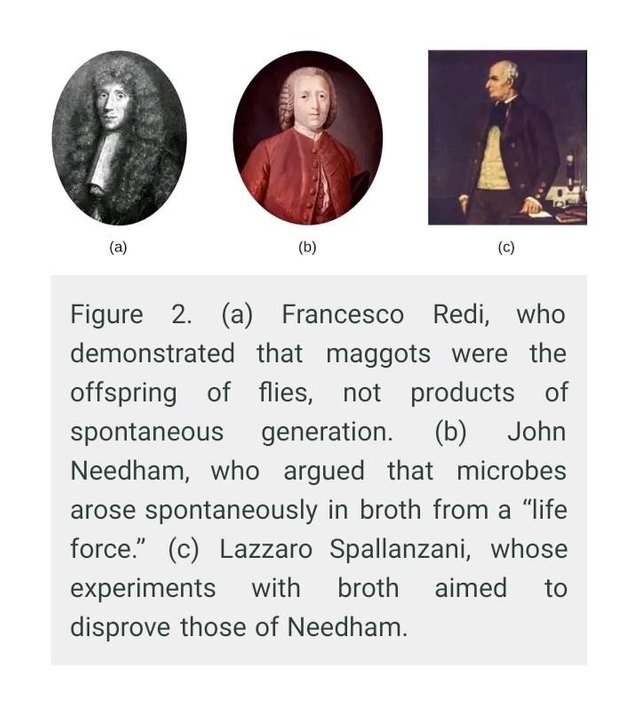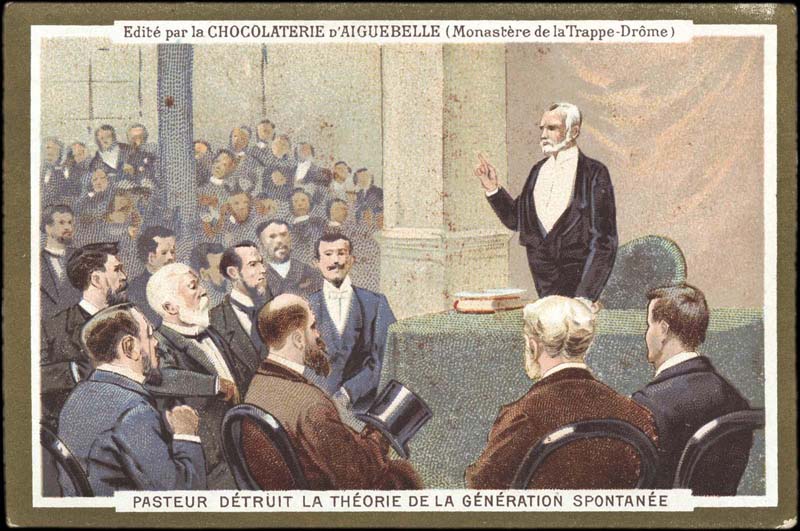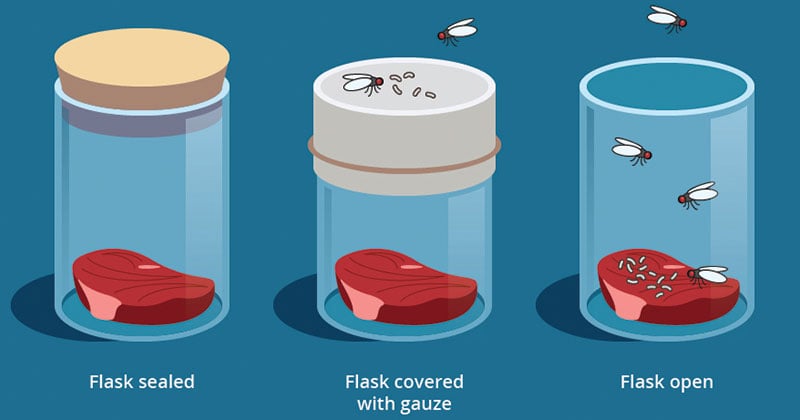The Greek philosopher Aristotle 384322 BC was one of the earliest recorded scholars to articulate the theory of spontaneous generation the notion that life can arise from nonliving matter. Get a printable copy PDF file of the complete article 448K or click on a page image below to browse page by page.
 Spontaneous Generation Microbiology
Spontaneous Generation Microbiology
In 1676 Anthony van Leeuwenhoek discovered microorganisms that were probably protozoa and bacteria.

Who discovered spontaneous generation. He was the first person to challenge the theory of spontaneous generation by demonstrating that maggots come from eggs of flies. The first step was taken by the Italian Francesco Redi. Redi hypothesized that flies laid eggs on the meat as it decayed and that the meat was nothing.
As evidence he noted several instances of the appearance of animals from. Fermentation and putrefaction were often perceived as being spontaneous phenomena a perception stemming from the ancient belief that life could generate spontaneously. The French Academy of Sciences sponsored a contest for the best experiment either proving or disproving spontaneous generation.
This sparked new interest in the microscopic world. Louis Pasteurs defeat of belief in spontaneous generation has been a classical rationalist example of how the experimental approach of modern science can reveal superstition. The theory of spontaneous generation was finally laid to rest in 1859 by the young French chemist Louis Pasteur.
Francesco Redi 18 February 1626 1 March 1697 was an Italian physician naturalist biologist and poet. While both supported the idea of spontaneous generation. In 1779 he discovered the workings of animal reproduction which.
Actually Louis Pasteur 1822-1895 is credited with DISPROVING spontaneous generation expanding the work of other scientists. He is referred to as the founder of experimental biology and as the father of modern parasitology. Full text Full text is available as a scanned copy of the original print version.
By this time of Spallanzanis research in 1745 there were already many critics of spontaneous generation. Biogenesis is the theory that living things can only come from other living things. He subsequently proposed that life only comes from life.
Scientist Who Disproved the Theory of Spontaneous Generation. The Theory of Spontaneous Generation. Before Virchow it was widely accepted that microorganisms simply appeared as.
Louis Pasteur - Louis Pasteur - Spontaneous generation. Some of the earliest experiments to challenge abiogenesis were performed during the Italian Renaissance in the 1600s. Spontaneous generation known also as abiogenesis was the theory believed by most philosophers and scientists of the day as there was no way to test any alternative ideas.
In 1668 Redi proved that no maggots appeared in meat when flies. Aristotle proposed that life arose from nonliving material if the material contained pneuma vital heat. Pasteurs winning experiment was a variation of the methods of Needham and Spallanzani.
This notion had been posited by Aristotle 382-322 BC and other Greek philosophers to explain decay and appearance of animals such as flies and frogs and was widely held as common sense even in 1700s and 1800s. Spallanzani did extensive research on the reproduction of animals and definitively disproved the theory of spontaneous generation 1768. Francisco Redi 1626-1697 demonstrated that flies did not arise spontaneously from rotting.
Louis Pasteur is credited with conclusively disproving the theory of spontaneous generation with his famous swan-neck flask experiment. During the 18th century the debate was pursued by the English naturalist and Roman Catholic divine John Turberville Needham and the French naturalist Georges-Louis Leclerc count de Buffon. Magical growth and spontaneous generation of minerals in the earth.
Louis Pasteur is widely seen as the scientist who finally disproved of spontaneous generation. Lazzaro Spallanzani 1729-1799 Italian biologist. It was Louis Pasteurs experiment in 1859 that is seen among many as the point where spontaneous generation was finally disproved.
It was developed in 1858 by Rudolf Virchow as a counter-hypothesis to spontaneous generation.
 Spontaneous Generation Examples Experiments Britannica
Spontaneous Generation Examples Experiments Britannica
 Spontaneous Generation Steemit
Spontaneous Generation Steemit
 Spontaneous Generation A Brief History Of Disproving It Amoebamike
Spontaneous Generation A Brief History Of Disproving It Amoebamike
 Louis Pasteur And The History Of Spontaneous Generation Pasteur Brewing
Louis Pasteur And The History Of Spontaneous Generation Pasteur Brewing
 Spontaneous Generation Microbiology
Spontaneous Generation Microbiology
 Spontaneous Generation Definition Examples Theory Biology Dictionary
Spontaneous Generation Definition Examples Theory Biology Dictionary
 Experiments In Support And Against Spontaneous Generation Basic Microbiology Microbe Notes
Experiments In Support And Against Spontaneous Generation Basic Microbiology Microbe Notes

